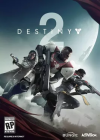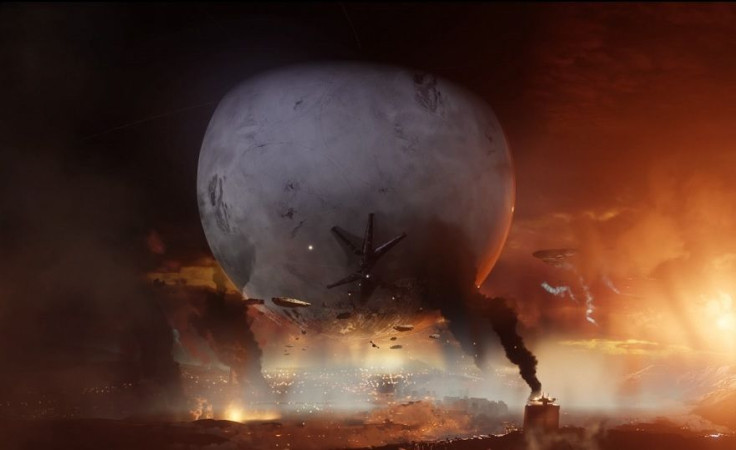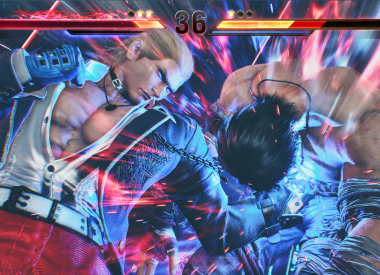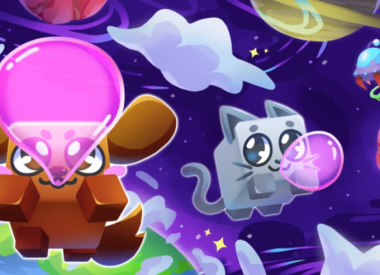It’s not everyday one of the industry’s most popular developers requests a mulligan on one of the most popular new IPs in gaming history. But that’s what we got with Destiny 2. And that willingness to abandon ideas that didn’t live up to expectations seems to be what the studio’s beloved shared-world shooter needed.
Expectations for Destiny 2 couldn’t be higher. Bungie’s first shared-world shooter enjoyed an enormous audience, despite issues with the quantity and quality of its content, thanks to some of the best shooting mechanics I’ve seen. Destiny’s gunplay was so good I bought a Vita just so I could keep grinding for Light while football monopolized my television on Sunday afternoons. I bought all four D1 expansions, came back for seasonal events and finished three of the game’s four raids. A lingering sense of disappointment never left though. Destiny was fun. But it was so much smaller and less complex than I’d expected. And I wasn’t alone in those feelings.
Now it’s time to lead a new Guardian out of the rubble (again). We were told Destiny would be a 10-year journey and our accomplishments would stick with us throughout. But now we’re back to square one because Bungie says it’s the only way to deliver the improvements fans demanded. The soul of the first Destiny hasn’t gone anywhere. This is still a franchise about exploring new worlds, finding cool guns and shooting bad guys with your friends. And my time with Destiny 2 has been much closer to the experience I chased the last three years. The game still has rough edges. But Destiny 2 feels like the beginning of something special.
There’s plenty that will be familiar to Destiny fans. The campaign focuses on humanity’s fight for survival after losing the Tower, and the Guardians’ quest to learn more about the mysterious, moon-sized orb they draw power from known as the Traveler. The Red Legion and its leader, Dominus Ghaul, are the primary antagonists. But the other factions from Destiny , including the Taken, appear in missions and patrol zones too. Loot is still the game’s biggest motivator. And you still need a few friends, or the help of a matchmaking site, to attempt the game’s toughest challenges. But almost everything, except the story, has been improved in Destiny 2.
To its credit, Destiny 2’s story might not be the most gripping narrative in gaming history but I can at least give you a suitable rundown of the campaign’s events without consulting several wikis, a 90-minute YouTube video and/or a few dozen Grimoire cards. Improved cutscenes tell the story beats that don’t translate well into FPS gameplay, and consistent communication from important NPCs keeps players informed throughout the Destiny 2 campaign. Adventures and Lost Sectors, two new additions to Destiny’s menu of in-game activities, also help flesh out the details. And each destination -- not all of Destiny 2’s patrol zones are planets -- has a second quest chain that unlocks after you beat the campaign.
Nowhere is Destiny 2’s potential on better display than in Leviathan, the planet-sized vessel that plays host to the game’s first raid. Leviathan doesn’t feel like a continuation of Destiny’s raid traditions, themselves inherited from the massively-multiplayer RPGs that inspired Destiny. Destiny 2’s first raid feels like an impossibly complex puzzle box; one with more secrets and rewards than any raid that’s come before it. A labyrinth of passageways provide alternate routes to every corner of Leviathan, sidestepping seemingly mandatory encounters, and hidden challenge rooms offer extra opportunities to collect raid loot. And when it seems you’ve finally identified all of Leviathan’s puzzles, never mind the solutions, you’ll end up on a fireteam with five strangers itching to show you a new door or corridor they just discovered. The encounters Bungie designed for Leviathan are some of the most brutal and rewarding in the franchise’s short life. But there’s a reason fewer than five percent of players have completed the raid despite the fact more than two-thirds already reached the level cap. Leviathan is tough as nails.
Anyone who plays enough Destiny 2 to be raid-ready will notice shortcomings. Post-campaign missions help bridge the gap from credits to the endgame; a solution that would have been greatly appreciated in D1. But weekly raids and Nightfall strikes are still your only two PvE activity options on the other side of Power level 270. And that problem is compounded by a growing discontentment with some of Destiny 2’s smaller activities, like public events. And it’s hard to blame people for being tired of rallying around the 10,000th Fallen Walker that needs killing. There are new public events in the mix but I suspect players will be tired of breaking up glimmer and ether excavations in a few weeks (at most).
The lack of new alien factions is similarly disappointing. The Cabal never got a major storyline in Destiny 1, so making them the focus of the D2 campaign makes a certain amount of sense. But we were hoping to see more than an expansion of the existing factions’ rosters. We appreciate the increased enemy diversity, especially if we have to spend another 100 or so hours fighting the same enemies fans already spent 100s (or 1000s) of hours fighting, but some brand new threats would’ve been much more exciting than a new Cabal unit wielding a flamethrower or a new Fallen grunt who can turn invisible.
And no discussion of the game’s controversial changes would be complete without noting fans’ headline-grabbing unhappiness with Destiny 2’s Shader and Crucible changes. Most players like having the ability to alter individual items. But Bungie’s stated goal, of encouraging players to revisit activities specifically for shaders, is mostly met with laughter when I’ve mentioned it to other Destiny 2 fans. The decision to change the structure of Crucible matches, from 6v6 to 4v4, has also proven unpopular with many Destiny fans. And we haven’t talked to anyone who’s glad Bungie stripped fans of their ability to choose which type of Crucible match to join. PvP did see some early love, in the form a new social space for Trials of the Nine participants, but that’s about as good as it gets with this incarnation of the Crucible.
There’s enough new material in Destiny 2 for the “it’s just more Destiny” line to feel a bit cynical. Even with its struggles, Bungie’s latest does a better job of bridging the gap between MMOs and shooters than we ever thought possible. There’s finally a coherent story, great fireteam content and substantially larger playspaces to explore. The Crucible changes won’t be popular with everyone. But the same could be said for D1. Destiny 2 doesn’t hope to reinvent the wheel. It’s the result of many long nights, early mornings and dedication to the idea that little tweaks (and a few big ones) would bring the core Destiny experience a bit closer to the studio’s original vision for the franchise. Bungie will need to keep tinkering with its largest creation to date in the weeks to come. But the studio’s shared-world shooter has never been on surer footing than it is today.
Destiny 2 is available for PS4 and Xbox One. The game hits PC on Oct. 24.
Be sure to check back with Player.One and follow Scott on Twitter for more Destiny 2 news in 2017 and however long Bungie supports Destiny 2 in the years ahead.



















